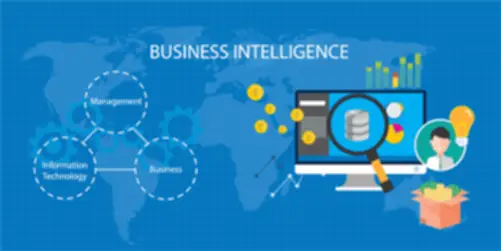What Is Data Loss Prevention? And Why You Want It
In some instances, knowledge can be recovered, however it’s at all times better to stop physical damage earlier than it occurs. Exposed information can embrace something from personal information, like social safety numbers, to proprietary business information. Information could discover its method to locations you don’t want, as users typically unintentionally circumvent security controls. Nonetheless, implementing a DLP strategy can be daunting, however with the right ally, it turns into so much simpler. Whereas these advantages make a compelling case for adopting DLP methods within any organization, understanding the benefits is just one a half of the equation. To make a well-informed decision, it’s additionally important to consider the financial implications.
What Is A Dlp System?
- If a potential menace is detected, it’s flagged, and user entry and management are restricted in real time.
- Data identification is the method of detecting sensitive or important data using predefined categories.
- Data loss prevention refers to safety measures that stop the unintentional destruction or disappearance of data.
- Nevertheless, within the occasion of a data breach, a well-implemented DLP policy also can assist mitigate the harm to an organization’s popularity.
- Implementing these data loss prevention measures requires instituting practices to enhance cybersecurity corresponding to end-to-end encryption and multi-factor authentication.
Data Loss Prevention (DLP) is a framework of safety controls, applied sciences, and processes designed to detect and forestall the unauthorized transmission, exfiltration, or exposure of delicate data. DLP options enforce knowledge safety insurance policies by constantly monitoring and controlling how information is saved, accessed, used, and shared across endpoints, networks, and cloud companies. Enterprise DLP options provide comprehensive knowledge protection across an organization’s whole infrastructure.

Knowledge loss prevention processes are info safety practices designed to guard delicate or crucial information within the corporate network from being lost, misused or accessed by unauthorized people. Fastly enhances DLP efforts by offering real-time visibility and control over information traffic. With its edge cloud platform, Fastly allows organizations to detect, stop, and respond to knowledge risks faster—before they turn into security incidents. By leveraging Fastly’s advanced safety tools, similar to Next-Gen WAF, companies can safeguard delicate information while maintaining the speed and performance their users expect.
One of the most effective ways to guard your data is to encrypt it—whether at rest or in transit. Regular testing and evaluate are essential to guarantee that the system is working as expected and adapting to modifications within the enterprise setting. This plan serves as a roadmap to assist decrease disruptions to business operations and ensures that the deployment proceeds easily. With the foundational steps in place, it’s time to create an in depth deployment plan.
For example, DLPs don’t do entitlement reviews, log consumer activity round delicate information unless it violates coverage, or allow you to assess the scope of information concerned in a breach. DLP, or Data Loss Prevention, is a cybersecurity answer that detects and prevents information breaches. Since it blocks extraction of delicate data, organizations use it for internal safety and regulatory compliance. Via fixed monitoring, the risk of knowledge breaches and leaks is considerably lowered.
While all customers expect to have the data accessible and available across the clock, knowledge loss events not solely cause enterprise downtime, however may find yourself in permanent data loss. Without proper knowledge safety optimization, companies are extra probably than to not lose information and experience business disruptions. In quick, DLP provides organizations a robust layer of knowledge loss protection, accelerates response to incidents and helps in sustaining regulatory compliance. Information loss prevention is an approach to data safety that implements a set of processes, procedures, and instruments Software engineering to stop the loss, misuse, or unauthorized access of delicate information. Three kinds of information loss prevention are network DLP, endpoint DLP, and cloud DLP.
Data Loss Prevention
Organizations are adopting DLP due to insider threats and rigorous data privacy legal guidelines, lots of which have stringent information protection or entry necessities. In addition to monitoring and controlling endpoint activities, some DLP instruments may also be used to filter information streams on the corporate community and protect data in movement. As A End Result Of so much of a company’s knowledge is in transit and exchanged through e mail, it’s imperative to implement knowledge loss prevention options inside e-mail systems. Egress Prevent’s real-time notifications level out mistakes to users if they’re about to happen. This means Prevent can cease employees from attaching the mistaken recordsdata, entering incorrect email addresses, or using cc instead of Bcc. It’s important to have a complete system for data https://www.globalcloudteam.com/ loss prevention to be able to forestall information breaches and keep away from the reputational and financial impact that comes with them.
As a half of a broader security strategy, DLP tools monitor for information breaches, exfiltration, misuse, and unintentional exposure, defending crucial info from falling into the incorrect arms. Proofpoint’s complete DLP options lengthen information safety across email, cloud purposes, and endpoints. These options present deep visibility into person habits and data interactions, enabling efficient detection and prevention of data loss risks dlp technologies.

Endpoint DLP entails securing the delicate data a company holds on its endpoints – desktops, smartphones, laptops, and so on. This follow focuses on stopping sensitive knowledge from being leaked, either by chance or maliciously, or misused or destroyed. The first step in deploying DLP is for businesses to outline the sensitive data they need to shield and build a DLP policy around. This might be bank card particulars, email addresses, and Social Security numbers, or just an inventory of names in a spreadsheet.

It’s notably challenging as a result of attackers use sophisticated methods to infiltrate networks and hold information hostage. This may happen as a end result of network points, server crashes, or storage problems through the transfer. Knowledge corruption is usually brought on by software errors, malware, and even improper formatting. This is why backing up necessary information is so crucial—it’s usually the only method to get well misplaced information. It happens when useful or sensitive information is destroyed, erased, or made inaccessible.
When delicate data is compromised in a breach, the fallout can lengthen far past financial loss. Due To This Fact, DLP policies should be configured to detect and block unauthorized makes an attempt to entry, copy, or transmit sensitive information, whether or not intentional or unintended. This can contain numerous strategies, corresponding to content material inspection, keyword matching, regular expression matching, and information classification. Cloud DLP options must ensure that information utilization and handling adjust to related legal guidelines, trade standards, and laws relating to knowledge protection. We advocate a proactive technique, using sturdy information loss prevention instruments to avoid pricey and damaging events. Whereas the IT division does the overwhelming majority of the on a regular basis work with these techniques and processes, stakeholders throughout your organization affect safety coverage and implementation.
